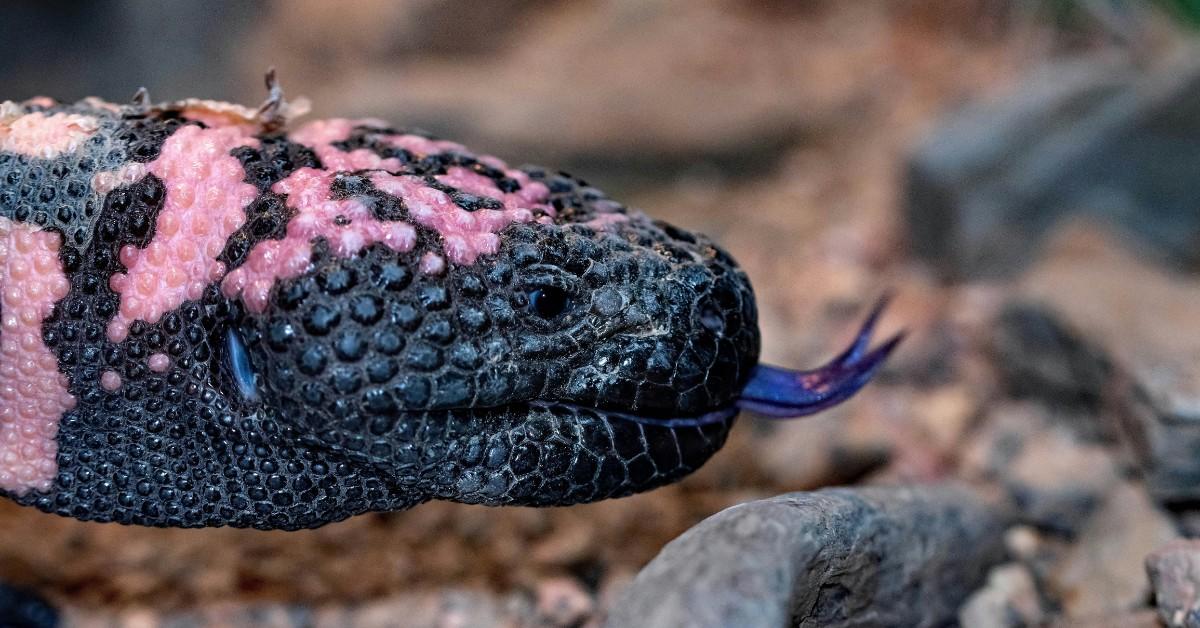Meet the Deadly Monster That Gave Us Ozempic
Ozempic's origins may surprise its die hard fans.
Published April 15 2025, 1:03 p.m. ET

Ozempic has become a dream drug for a lot of people around the world. That's because it can not only help regulate the blood sugar of people with certain types of diabetes, but it's also been proven to be an appetite suppressant, which has helped many people hit weight loss goals that felt unreachable without the assistance of a prescription.
However, many people may be surprised to learn that this miracle drug is actually made using the stuff of nightmares.
That's right, many are now questioning whether or not Ozempic is actually just reptile venom. The answer to that may surprise you, especially when you learn exactly how the medication came to exist and why experts think that the proprietary blend could do more than just manage type 2 diabetes.
Keep reading to learn more.

Is Ozempic reptile venom?
While the venom secreted by a Gila monster is enough to kill a human if they've been bitten by the scaly reptile, when injected using a controlled balance, it can help manage a host of health conditions.
That's right. Gila monster venom — or, more accurately, one of the ingredients within the venom's chemical makeup — is what allows pharmaceutical companies to manufacture Ozempic and Wegovy, according to Science Alert.
That's because the ingredient can help replicate the glucagon-like peptide (GLP-1) that these medications rely on when it comes to making people feel full.
And, not only that, but the specific hormone produced by the Gila monster, called exendin-4, has a longer lasting impact on appetite suppression and blood sugar regulation that can continue working for hours after it's been introduced via an injectable.
Do Gila monsters have to die to create Ozempic?
While the venom from the lizard, or more accurately, the exendin-4 hormone found in the venom, is a key ingredient in Ozempic, it's not actually harvested directly from the lizards. Instead, a synthetic version of the hormone is used.
The original version of this compound was created in the early 1990s, according to Business Insider, and then it underwent years of development at the hands of a government researcher named Dr. John Eng.
Eng eventually patented the molecule he created as a result of his research, and it was used to create extenatide, which is still used to this day to treat type 2 diabetes.
The research completed by Eng was essential to the further development of these compounds, and what he uncovered help provide some of the medications that are hitting the market decades later.
What other reptile venom is used for medication?
Gila monsters aren't the only creatures out there making contributions to the world of healthcare. According to the Lehigh Valley Health Network's blog, there are plenty of other reptiles, specifically snakes, lending their venom to science.
For example, ACE inhibitors, which are used to lower blood pressure, were created using the venom of the Brazilian viper.
Additionally, integrilin, a blood thinner used to help those who have had a heart attack, is made using the venom from pygmy rattlesnakes. Another viper, specifically the saw-scaled variety, has also made contributions to the advancement of medicine.
And they're not alone, there are other bugs (scorpions) and lizards have also had their venom isolated and synthesized for science.
Of course, all of those medical discoveries came at a cost to the animals involved in the testing, which may make some people wonder if there aren't other ways to advance science without harming the most vulnerable among us to do so, especially when it comes to animal testing.
But still, it's fascinating to see how scientists can manipulate something so deadly, and turn it into something else entirely.